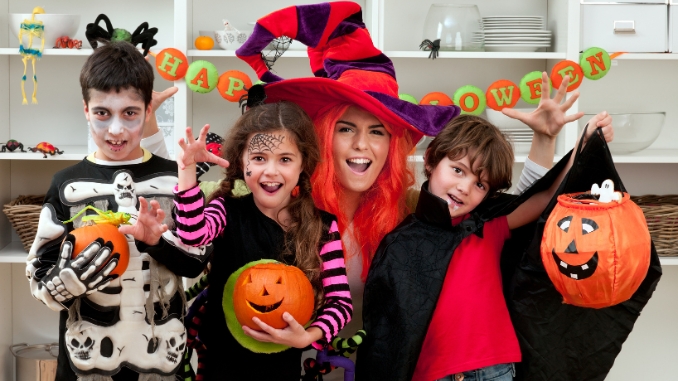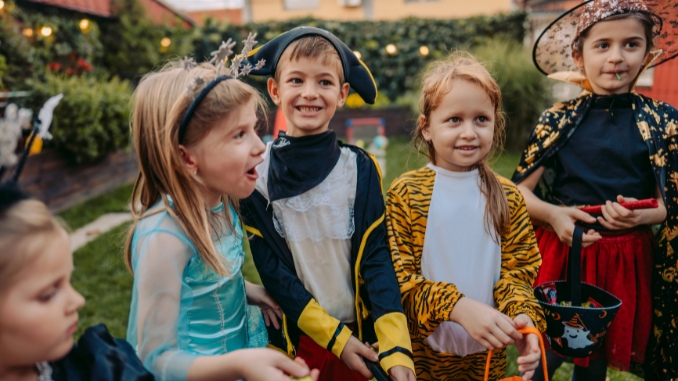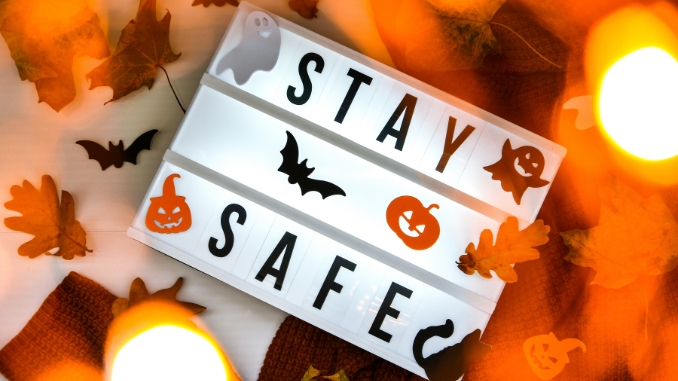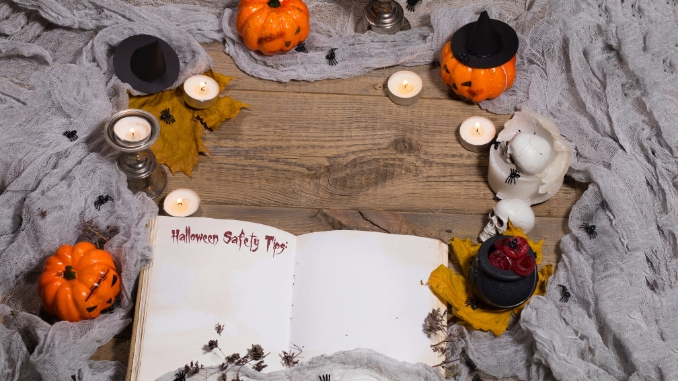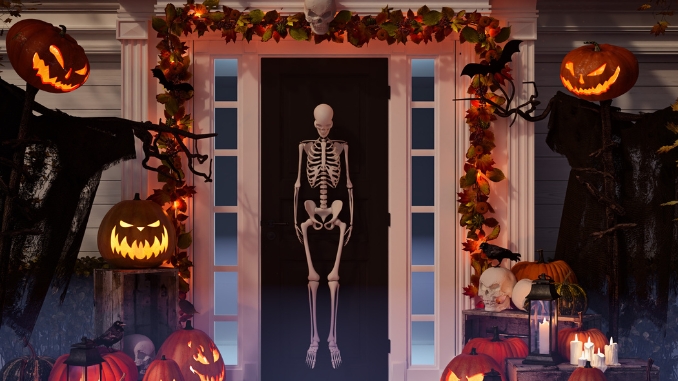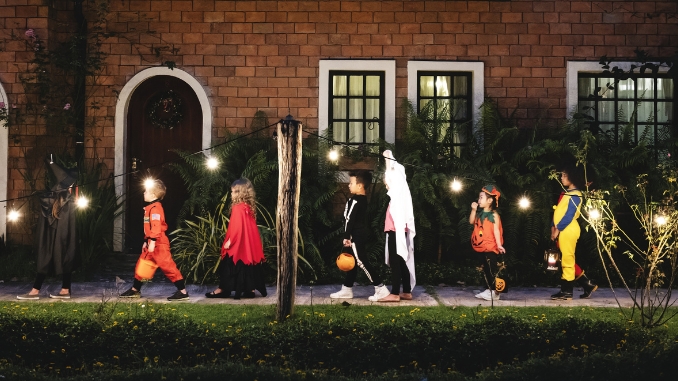From the history behind Halloween traditions, Halloween Decorations, Halloween candy, and Halloween parties to the best practices for staying out of harm’s way, we’ve got you covered. Unravel the meaning behind popular Halloween costumes, and learn about trick-or-treating etiquette. Our expert advice will help you confidently navigate the dark streets and avoid potential hazards.
The Origins of Halloween and Trick-or-Treating
Halloween, also known as All Hallows’ Eve, has ancient origins that date back over 2,000 years—the holiday originated from the Celtic celebration of Samhain, which observed the end of the harvest season and the start of winter. During this time, the Celts believed that the boundary between the living and the dead was blurred, allowing spirits to cross into the mortal realm.
The Celts would ignite bonfires and don disguises to protect themselves from evil spirits. This custom transformed over time and became what we recognize as a trick-or-treat-or-treating. The tradition of trick-or-treating dates back to the Middle Ages, when impoverished individuals would move from house to house on All Souls’ Day, receiving sustenance in exchange for offering prayers for the deceased.
Safety Concerns and Risks
Trick-or-treating is a beloved tradition during Halloween, but it’s important to acknowledge the potential safety concerns and risks that come with it. While the chances of encountering danger are relatively low, it’s better to be prepared and take necessary precautions.
1. Visibility
With the streets being dimly lit during the evening, it’s crucial to ensure that you and your children are easily visible to drivers. Choosing a Halloween costume with bright colors or adding reflective tape can significantly improve visibility and reduce the risk of accidents. Using glow sticks or a flashlight can also help increase visibility while adding to the Halloween spirit.
2. Potential accidents due to uneven sidewalks or poorly lit areas
Before starting on your trick-or-treating adventure, familiarize yourself with the route you plan to take. Avoid areas with limited lighting or hazardous conditions. It’s also a good idea to walk on sidewalks whenever possible and cross streets at designated crosswalks to minimize the risk of accidents.
3. Being mindful of the treats
While instances of tampering are rare, it’s essential to inspect all candies and treats before consuming them. Look for any signs of tampering, such as opened wrappers or unusual smells. If something seems suspicious, it’s better to err on caution and discard the questionable treats.
Remember, Halloween should be a joyful experience, and by being aware of the potential risks and taking protection, you can ensure a safe and enjoyable Halloween night for everyone involved.
Trick-or-Treating Safety Statistics and Facts
Before diving into the essential trick-or-treating safety tips and rules of Halloween, let’s take a moment to understand the importance of being cautious during this festive season.
According to the National Safety Council, children are more than twice as likely to be involved in a pedestrian-car accident on Halloween than on any other day. This alarming statistic emphasizes the need for heightened vigilance and safety measures during trick-or-treating.
Additionally, it’s worth noting that Halloween-related injuries can extend beyond pedestrian accidents. Experts reported that falls, burns, and cuts are some of the most common injuries during Halloween festivities. These accidents can usually be prevented with proper planning and adherence to safety guidelines.
With these statistics in mind, let’s explore some essential trick-or-treating safety tips and rules of Halloween that will help keep you and your loved ones safe during this exciting holiday.
Importance of Safety During Halloween
While Halloween is a festive and exciting time, it’s crucial to prioritize safety, especially for younger children who participate in trick-or-treating. Ensuring a safe environment allows everyone to enjoy the holiday without unnecessary risks.
Here are some key reasons why safety and rules of Halloween should be a top priority during Halloween night:
- Protecting Children: Halloween is when children roam the streets searching for candy. By following safety guidelines, we can minimize the likelihood of accidents, injuries, or encounters with strangers.
- Peace of Mind for Parents: Parents can enjoy the festivities with peace of mind, knowing that their children are safe and well-prepared for the night ahead.
- Promoting Community Awareness: By prioritizing safety, we can create community awareness and responsibility, ensuring everyone looks out for one another.
Essential Trick-or-Treating Safety Tips
Trick-or-treating can be a thrilling experience for children and adults alike. However, following some essential safety tips and rules of Halloween is crucial to ensure a fun and secure evening.
Here are some fundamental guidelines to keep in mind:
1. Trick-or-Treating Safety Tips for Parents
Your child’s safety is the most important thing to you as a parent. Here are a few additional trick-or-treating safety tips to keep in mind:
- Plan: Before heading out, plan your route and discuss safety rules with your child. Let them know what to do if they get separated from the group or encounter a stranger.
- Know your neighborhood: Familiarize yourself with the area where you’ll be trick-or-treating. Note any potential hazards, such as busy streets or construction sites.
- Carry a first aid kit: Accidents can happen, so carrying a small first aid kit with you is always a good idea. Include bandages, antiseptic wipes, and any medications your child may need.
- Bring a phone: Ensure to bring a fully charged phone with you in emergencies. Program important numbers, such as your pediatrician or a local hospital, into your phone in advance.
- Be visible: Make sure you and your child are visible to drivers. Consider wearing bright or reflective clothing and carrying a flashlight.
- Stay alert: Look for any potential hazards, such as uneven sidewalks or tripping hazards. Watch for cars and make sure your child stays on the sidewalk.
- Teach your child to say no: Teach your child to say no to strangers who offer them candy or try to lure them away from the group. Ensure they always stay with the group and do not wander off alone.
Following these additional safety tips can help ensure your child has a fun and safe trick-or-treating experience.
2. Trick-or-Treating Safety Tips for Children
Trick-or-treating is one of the highlights of Halloween for children. Here are a few trick-or-treating safety tips for kids:
- Stick together: Make sure to stick with your group and never wander off alone. If you get separated, go to a well-lit area and wait for your group to find you.
- Stay on the sidewalk: Always stay on the sidewalk and cross streets at designated crosswalks. Look both ways before crossing the street.
- Be polite: Remember to say “please” and “thank you” when collecting your treats. Respect other people’s property and don’t litter.
By following these trick-or-treating safety tips, you can help ensure that you have a fun and safe Halloween.
3. Trick-or-Treating Safety Tips for Drivers
For drivers, it’s essential to be extra cautious on Halloween. Here are a few trick-or-treating safety tips to keep in mind:
- Be alert: Keep an eye out for children who may be crossing the street. Slow down and be prepared to stop at all times.
- Reduce distractions: Avoid using your mobile phone or any other distractions while driving. Keep your focus on the road at all times.
- Drive slowly: Reduce your speed in residential areas and near schools. Be prepared to stop suddenly if necessary.
- Use your headlights: Keep your headlights on, even during the day. This will make it easier for you to see children wearing dark costumes.
By following these trick-or-treating safety tips, you can contribute to a safe environment for everyone and an enjoyable Halloween.
Understanding the Rules of Halloween
- Plan a route: Plan a well-lit route in a familiar neighborhood before setting off for trick-or-treating. Avoid unfamiliar areas or locations that may be poorly lit.
- Set a time limit: Determine a specific time frame for trick-or-treating and stick to it. This will prevent children from wandering around too late into the night.
- Supervise Young Children: Ensure a responsible adult accompanies young children throughout the trick-or-treating excursion.
- Costumes: Dress up in creative and spooky costumes. Popular choices include witches, ghosts, vampires, zombies, and various pop culture characters.
- Decorations: Decorating your home with pumpkins, skeletons, spiderwebs, and other eerie decorations is common. Some people turn their yards into haunted houses for a scarier experience.
- Pumpkins: Carving pumpkins into Jack-o’-lanterns is a tradition. Use candles or battery-operated lights to illuminate them. Save the pumpkin seeds for roasting.
- Halloween Parties: Attend Halloween parties with spooky-themed food, drinks, and games. Costumes are usually worn at these gatherings.
- Respect Personal Space: Some people are sensitive to scary costumes or may not want to participate in Halloween. Be respectful of their wishes.
- Age-Appropriate Activities: Ensure that Halloween activities are suitable for your age group. Young children may need supervision, while teenagers can enjoy more independence.
- Respect Property: Don’t damage or vandalize property, including decorations and pumpkins.
- Cultural Sensitivity: Be mindful of cultural appropriation and stereotypes in costume choices. Avoid offensive or culturally insensitive costumes.
- Clean up: If you decorate, clean up decorations and any litter after the holiday.
- Have Fun: Most importantly, have a fun and spooky time celebrating Halloween with friends and family!
1. Costume Safety Tips
Aside from visibility, below are some additional tips for a Halloween costume.
- Avoid Masks: Masks like Santa Claus and Sam’s Head can obstruct vision and make it difficult to see hazards. Opt for face paint or makeup instead, ensuring that it is non-toxic and safe for use on the skin.”
- Comfortable Shoes: Ensure that shoes are comfortable and well-fitted to prevent trips and falls during the night.
2. Candy Safety Tips
- Inspect Treats: Before allowing children to consume candy or treats, thoroughly inspect them for any signs of tampering or unusual packaging.
- Avoid Homemade Treats: While homemade treats can be delicious, it’s best to stick to store-bought, individually wrapped candies for safety reasons.
- Allergies and Dietary Restrictions: Be mindful of any allergies or dietary restrictions that children may have. Consider providing alternative treats or non-food items for children with specific needs.
3. Stranger Danger Awareness
- Stick to Well-Lit Areas: Encourage children only to visit homes that are well-lit and appear welcoming. Remind them never to enter a stranger’s house or vehicle.
- Stay in Groups: Trick-or-treating in groups provides an extra layer of safety. Encourage children to stay together and never stray too far from the group.
- Use the Buddy System: Pair children with a buddy and encourage them to look out for one another throughout the night.
4. Neighborhood Safety Measures
- Ensure Proper Lighting: If you are a homeowner participating in handing out treats, ensure that your porch and walkway are well-lit to create a safe environment for trick-or-treaters.
- Clear Pathways: Remove any obstacles or tripping hazards from your yard or walkway to prevent accidents.
- Keep Pets Secure: If you have pets, keep them indoors or in a secure area during trick-or-treating hours to avoid potential incidents.
Alternatives to Traditional Trick-or-Treating
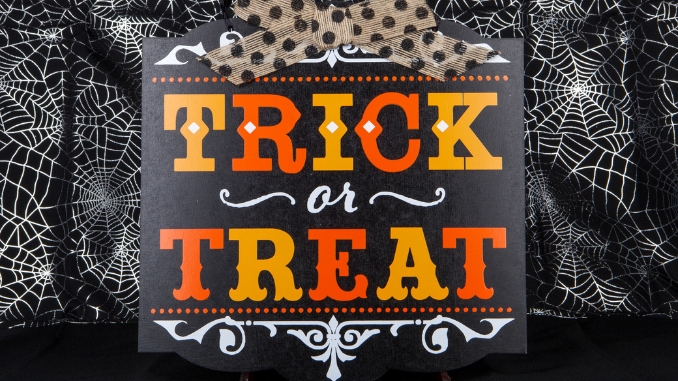
Here are some creative ideas for an alternative Halloween celebration:
- Trunk-or-Treat: Many communities organize trunk-or-treat events where cars are parked in a designated area, and children can go from car to car collecting treats. This provides a controlled and safe environment for children to enjoy trick-or-treating.
- Halloween Movie Night: Instead of hosting a Halloween party, host a Halloween movie night in your backyard or living room. Set up a projector, prepare spooky healthy snacks, and enjoy a night of Halloween-themed movies with friends and family, like “Trick r Treat” by Michael Dougherty.
- Virtual Costume Party: Organize a virtual costume party where participants can dress up in their favorite costumes, like Sam’s head, and connect through video calls. Play games, have a costume contest, and enjoy the festivities from the comfort of your own home.
While traditional trick-or-treating can be a fun experience, these alternative ways to celebrate Halloween may be more suitable for specific individuals or communities
Conclusion
Halloween is a magical time filled with excitement and mystery. By following the rules of Halloween and prioritizing safety, we can ensure that everyone has a fantastic and memorable experience. Remember to plan a safe route, choose visible costumes, inspect treats, and teach children about stranger danger.
Whether you stick to traditional trick-or-treat-or-treating or explore alternative celebrations, this event can be filled with joy and fun. By staying informed and implementing the essential trick-or-treating safety tips and rules of Halloween, you can make this Halloween a spooktacular event for all. So go out, have fun, and enjoy the magic of this enchanting holiday!
Maintaining your waistline during the holiday season couldn’t be easier! And even better news – this workout can be done any time during the year, not just during the holiday season. Introducing the Metabolism Boosting Workout to Burn Off Those Extra Holiday Calories.

Rick Kaselj MS, is a leading kinesiologist and injury specialist as well as co-creator of the best-selling Unlock Your Hip Flexors program. Rick creates exercise programs that help people heal injuries and eliminate pain, so they can go back to living a full, active, healthy life.

